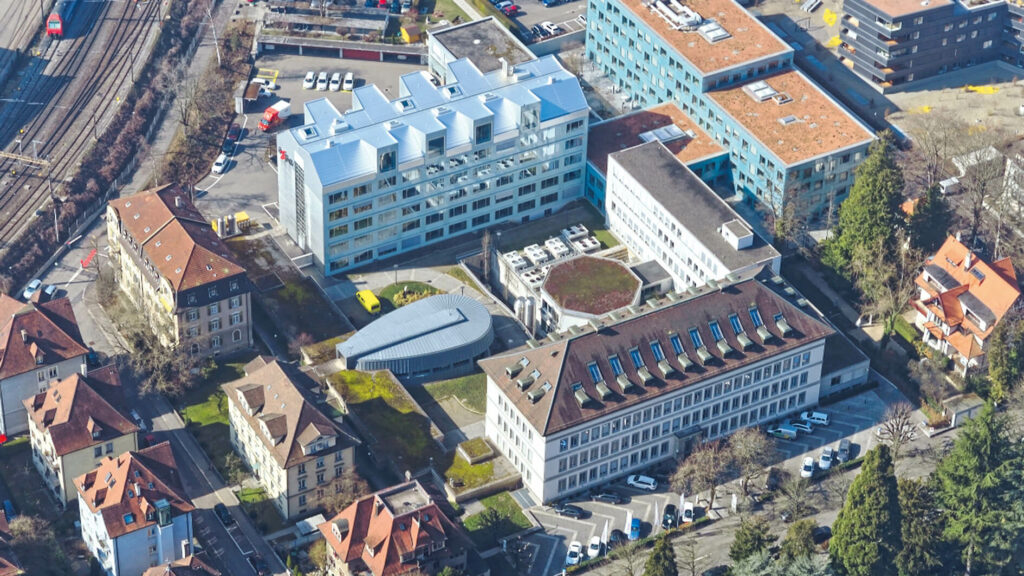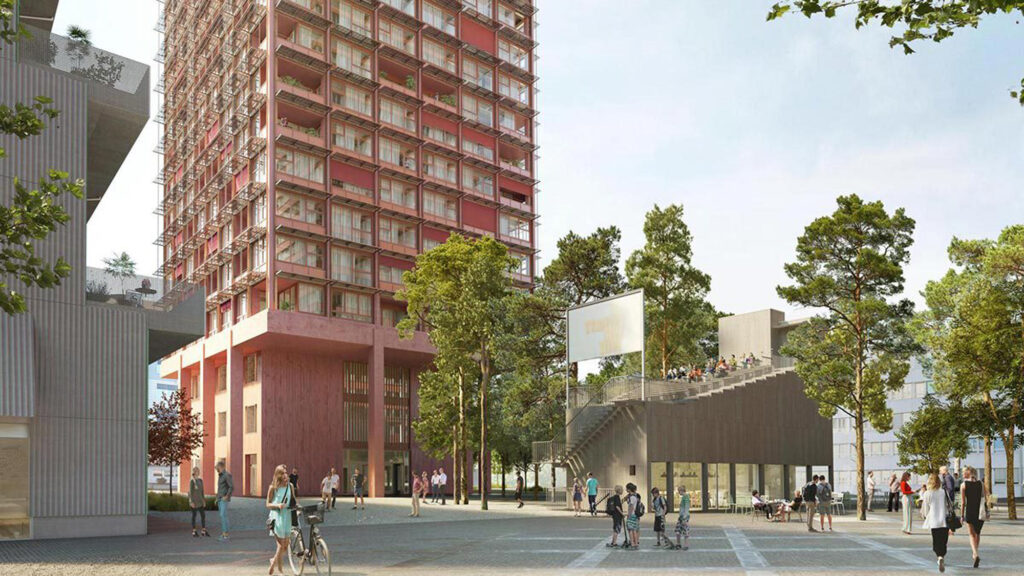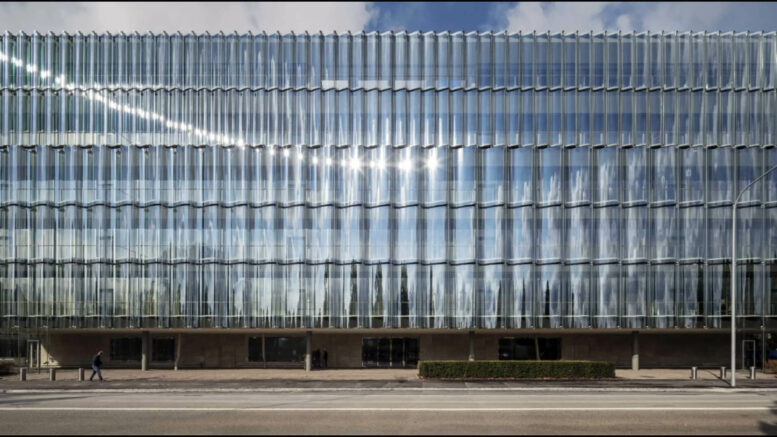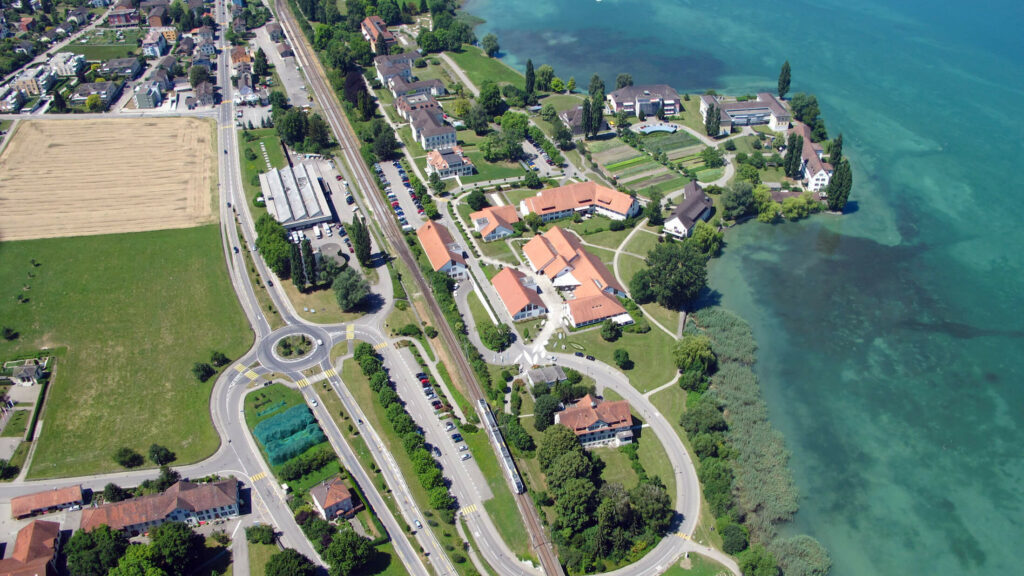The buildings come from different construction phases. This places high demands on the integration of the energy supply - especially with regard to regulation and temperature levels. A total of ten buildings are distributed across 33,000 m2 of floor space with a heating capacity of about 1.1 MW and a cooling capacity of about 700 KW. The new system should be flexible enough to supply the entire site with energy for the next 40 years, including extensions. Extensive temporary facilities had to be erected to ensure ongoing supply of energy to the buildings. The short conversion phases had to be planned very precisely and coordinated with all parties involved.
New Energy Supply at the Axpo Site
Baden
The ten buildings of Axpo's headquarters have a new energy supply for the site. This has significantly reduced the CO2 emissions and energy demand and created flexibility for the new buildings.

How can the energy supply be changed without interrupting the ongoing operations?
Challenges
Generating, distributing and regulating heat: Even though the new plant offers more capacity, it consumes significantly fewer resources.
Solutions
The primary energy used to generate heat for the site was reduced by 52% and CO2 emissions by more than 80%. This was made possible through new heat pumps, the use of groundwater and waste heat and a demand-oriented control system.



